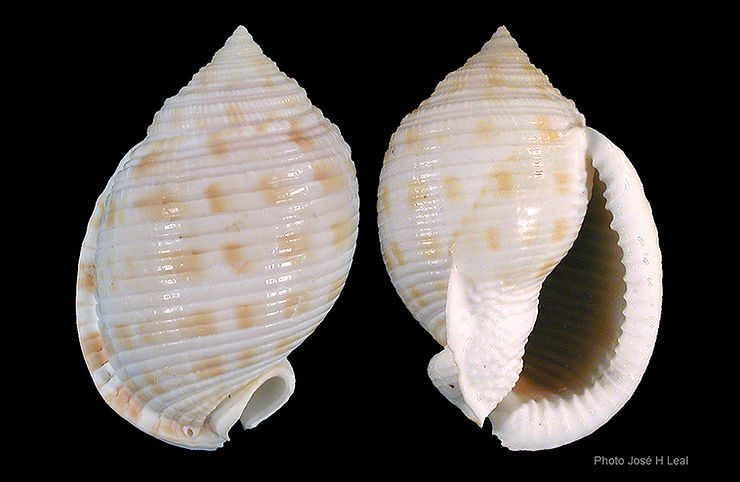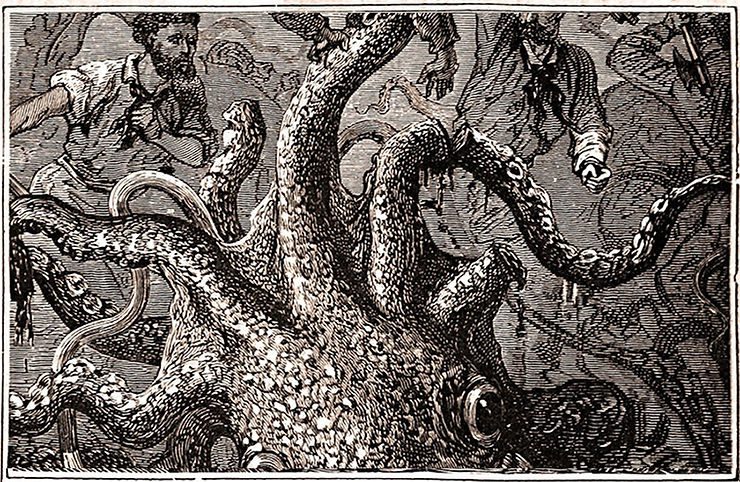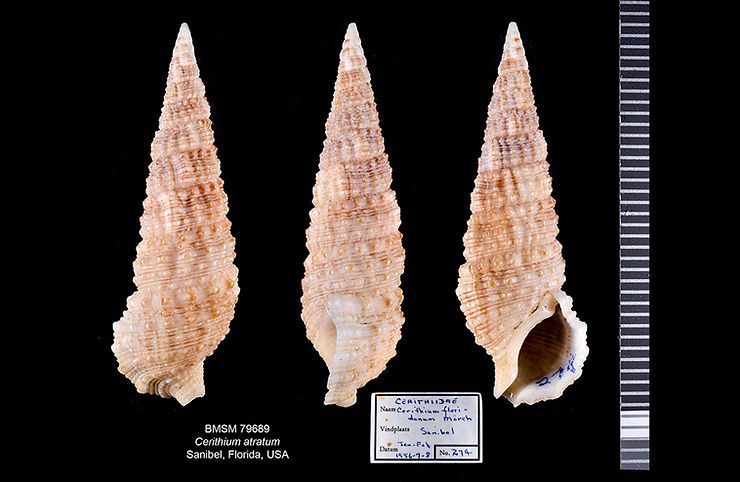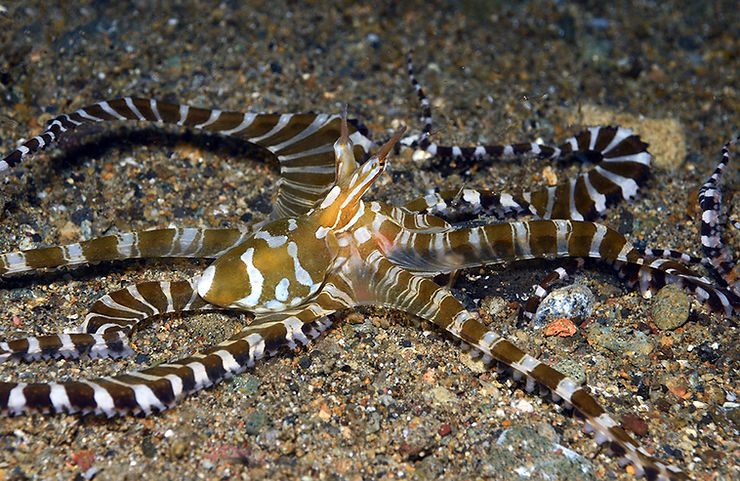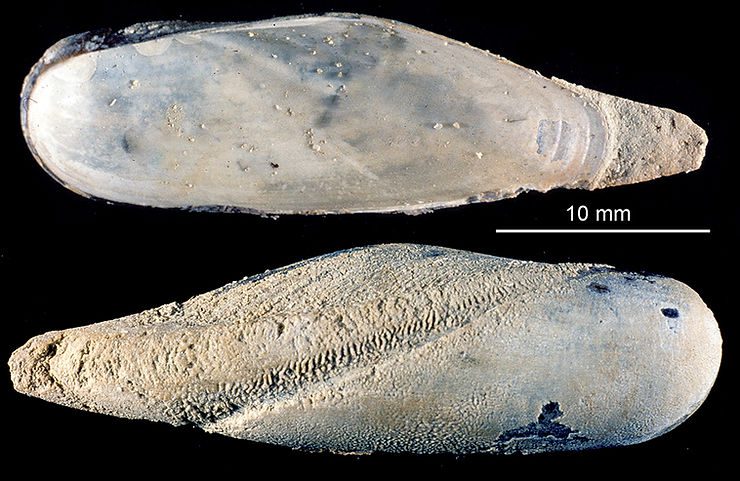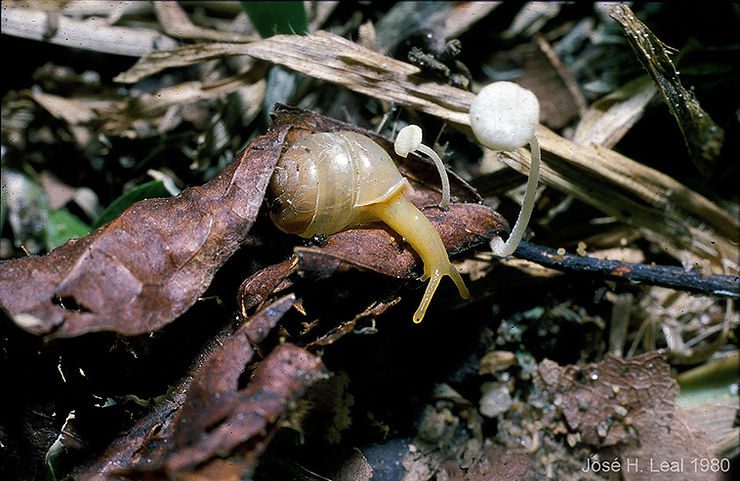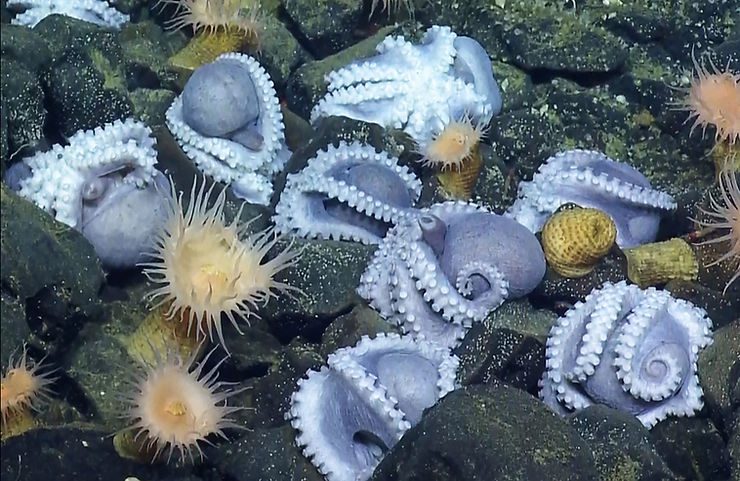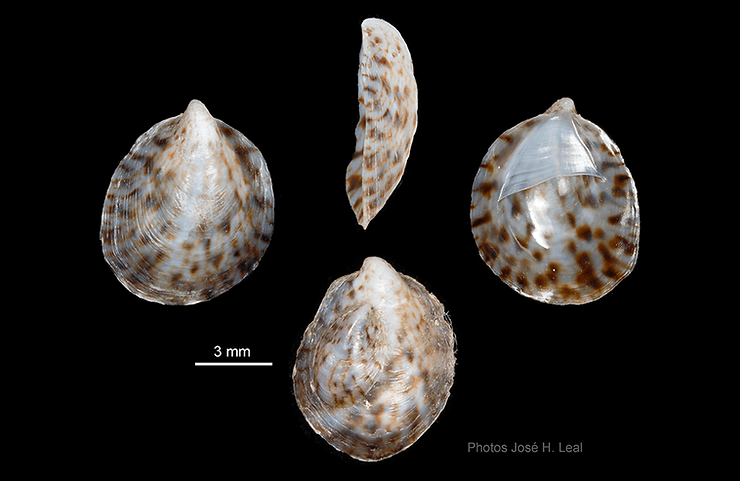
Shell of the Week: The Little Speckled Slipper Snail
Crepidula ustulatulina Collin, 2000, is a local gastropod that reaches only about 13 mm (about 0.5 inch). Its shell is oval, thin, and convex. Slipper snails have an unusual shelf that serves as protection to the animal’s most delicate organs. The shelf margin in this species is arched and extends further forward (downward in the photos) on its left side. As the common name of the species indicates, the shell usually displays a speckled color pattern, with distinct chestnut-brown spots or streak
